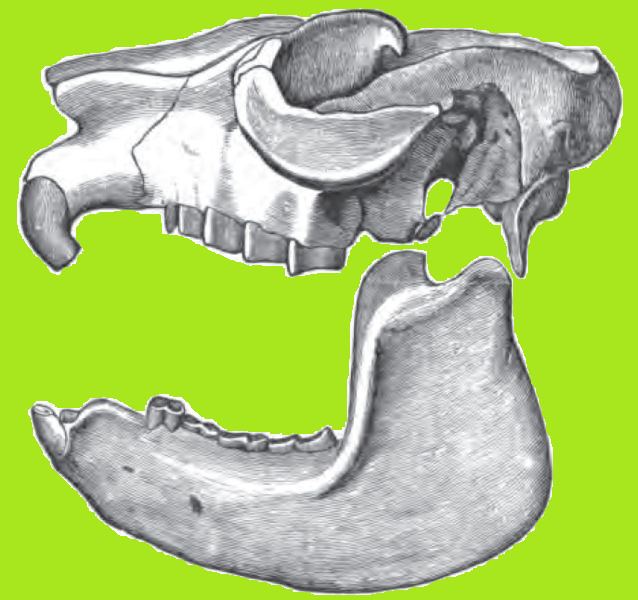Suborder †Typotheria Phylum Chordata | Rank Genus | |
 | ||
Similar Notoungulata, Typotheria, Hegetotheria, Hegetotheriidae, Archaeohyracidae | ||
Mesotherium ("Middle Beast"), better known by its synonym, "Typotherium," is the type genus of Mesotheriidae, a long-lasting (roughly from 55 to 2 mya) family of superficially rodent-like, burrowing notoungulates from South America. It was first named by Étienne Serres in 1867, and through further finds now contains four species, M. cristatum, M. hystatum, M. maendrum, and M. pachygnathum.
Contents
Etymology
Serres named Mesotherium so due to his belief that it was an intermediate between rodents and pachyderms (or ungulates), due to its large upper incisors, and its size and proportions. "Serres—by a happy inspiration proposed calling it Mesotherium—as being a common centre towards which all mammalia got happily confounded," Hugh Falconer wrote Darwin in April 1863. "Bravard sent it home under the name of Typotherium as being the central type from which all mammals diverged." It was Serres' view that there was only one underlying animal type.
Despite Serres' having officially named the genus Mesotherium, it was known from the late 19th century to the early 20th century under the name "Typotherium", given it by the French palaeontologist living in Argentina, Auguste Bravard; under this name Bravard sent the skull he found to Paris, which led to the family being named "Typotheriidae", and served as the basis for the order Typotheria. As the name Mesotherium had been published earlier in the same year as Typotherium, Mesotherium was declared the valid name of the genus, (Simpson, 1980) and Mesotheriidae the valid name of the family. Nevertheless, as the rules do not apply to anything above the family, the name of the order Typotheria is still in use, but refers to a wider range of rodent-like notoungulates.
Description
Mesotherium was likely the size of a small sheep, and weighed around 55 kilograms (121 lb). Like most rodents, it had superficially long upper incisors, which met at the tips, however, it had enamel on both the labial and lingual surfaces of the incisors, while rodents only have enamel on the labial surface. Mesotherium's lower incisors were reminiscent of those of a rabbit's.
Mesotherium's ankle joint was made up of a "ball-and-socket" arrangement between the astralagus and the navicular, as well as a sliding articulation of the calcaneocuboid joint, which would cause extension-flexion in the ankle, as well as supination-pronation of the foot. Because of this, Florentino Ameghino predicted in 1905, and confirmed in 1906 that Mesotherium would have a great toe.
Mesotherium was likely fossorial, in that it dug, possibly to find food.
